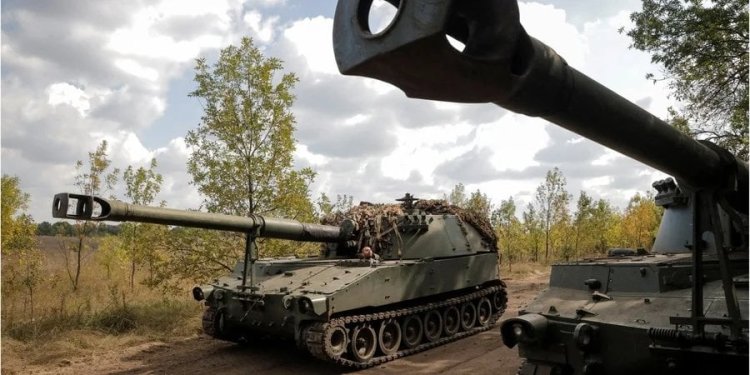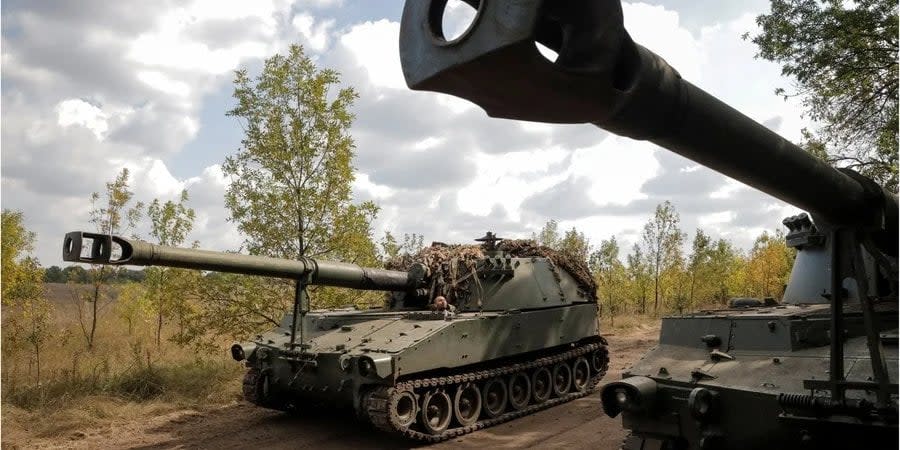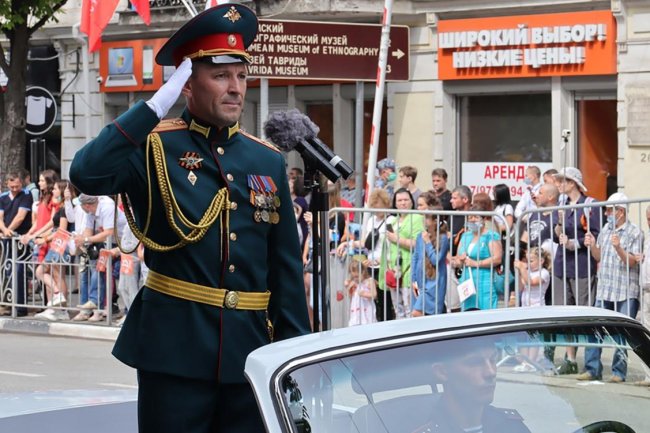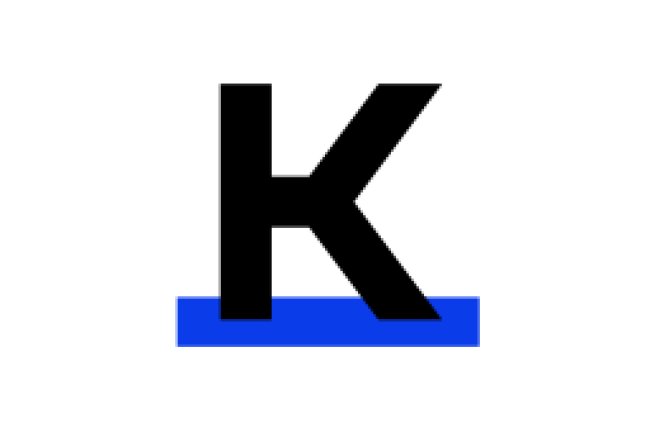Battlefield situation in southern and eastern Ukraine — expert interview
Ukrainian artillery near the frontline in the Donetsk region, September 11, 2023Retired Major Oleksiy Hetman, a veteran of the Russo-Ukrainian war, explained in an interview with NV Radio on Sept. 18 the situation with Ukraine’s counteroffensive in the country’s south and east.NV: Let’s start with the liberation of Klishchiivka, near Bakhmut. As far as I understand, this is a tactical success. But is this a tactical success that could develop into something more?Hetman: Yes, it was just reported in the news that the liberation of Klishchiivka would give us the opportunity to build a certain bridgehead for further advancement deep into the temporarily occupied territories to the east and to cut off all logistical ways of supplying something to Bakhmut, including weapons, ammunition, even, as far as I understand, food and water. Because there, you rightly said that almost everything is destroyed. And as they say, shops don’t work there and it’s impossible to buy anything. There were tal


Retired Major Oleksiy Hetman, a veteran of the Russo-Ukrainian war, explained in an interview with NV Radio on Sept. 18 the situation with Ukraine’s counteroffensive in the country’s south and east.
NV: Let’s start with the liberation of Klishchiivka, near Bakhmut. <...> As far as I understand, this is a tactical success. But is this a tactical success that could develop into something more?
Hetman: Yes, it was just reported in the news that the liberation of Klishchiivka would give us the opportunity to build a certain bridgehead for further advancement deep into the temporarily occupied territories to the east and to cut off all logistical ways of supplying something to Bakhmut, including weapons, ammunition, even, as far as I understand, food and water. Because there, you rightly said that almost everything is destroyed. And as they say, shops don’t work there and it’s impossible to buy anything. There were talks about Andriivka a few days ago that the civilian population had not been observed there at least since the beginning of the year.
This village is completely destroyed and there is not a single surviving house. How important is it? Andriivka is three kilometers from Klishchiivka, while Klishchiivka is three kilometers from Bakhmut. And there are certain logistical routes and roads further away along which the Russians used to transport and deliver something, at least to the group that is located directly in Bakhmut. Having cut these routes, we cannot say that we made it impossible but rather we have significantly complicated the task of supplying these troops.
Finally, Bakhmut is now partially encircled. And we’ve seen how our assault brigades will act. A video even appeared on social media of our 3rd Separate Assault Brigade offering Russia’s 72nd Brigade to surrender. Some managed to surrender. Those who didn’t make it were destroyed. Three battalion commanders were killed, as well as this brigade’s intelligence chief. By and large, this Russian brigade was completely destroyed. Therefore, we hope for the same actions in the future.
NV: There was another story about this 72nd Brigade, at least there are reports on social media. In particular, [Austrian military analyst] Tom Cooper writes that some of the surviving units of this 72nd Brigade tried to surrender but even their own artillery simply shot them.
And then he asks a question: why are people surprised that so many Russian soldiers prefer to commit suicide rather than surrender? Because they aren’t even allowed to do so. What do you think about that?
Hetman: Yes, indeed. We’ve said a lot that they have barrier troops that prevent them from retreating. And when they try to retreat, they simply shoot them. This is a unfamous Russian practice. But to also “cover” their own unit with artillery. It’s better to share this information about the artillery shooting of their own brigade to analyze it more, and to talk about it more on our different channels and platforms.
Read also: Ukraine’s advance towards Tokmak may accelerate — Estonian intelligence
Because the Russians also hear about it. They can find ways watch our news, or someone will tell them. When many of them know what their own can do with them, I think they had no desire to fight, and now it will decrease even lower. But the desire to surrender will grow.
NV: It’s now reported that about 52,000 Russian troops are deployed near Bakhmut. And they continue to expand their military presence further north, i.e., in the north of Luhansk Oblast and towards Kupyansk and Lyman.
Some suggest that the Ukrainian military command is tying and grinding down Russian forces near Bakhmut to deprive Moscow of reserves to reinforce other sections of the frontline. How do you assess this thesis?
Hetman: As fully justified, because even before the Russians tried to capture Bakhmut, according to estimates, they lost 50,000 lives. It was calculated that one life of a Russian serviceman was staked for every 42 centimeters of captured Bakhmut. That is, we can assume that they really walked over the corpses and occupied this city. That grouping in the Lyman-Kupyansk area is growing. Although I must be careful when saying that since a powerful grouping had been deployed there for at least half a year before that. Its number was estimated at 130,000 troops.
They have more than 550 pieces of barreled artillery, 350 pieces of multiple launch rocket systems, 2,000 pieces of heavy equipment, including up to 1,000 tanks. This grouping existed before. Although the Russians say they’re bolstering that area, that they have certain tasks there and they’ll fulfill them, they don’t particularly enhance anything. At least in the fact that some additional forces and equipment are arriving from somewhere in the middle of Russia. Nothing arrives there, it was already there even before that.
Read also: Ukraine’s grinding advance towards Tokmak — expert interview
It’s about 100 kilometers between Kupyansk and Lyman where they’re deployed. They narrowed the front line in some places to 5-10 kilometers. And they can really concentrate a large number of forces and equipment there, trying to break through our defense and advance further. And this is what the Russians call the fact that they’ve bolstered the grouping, that they can still strengthen it, and take offensive actions successfully.
I don’t know what they consider successful if they’re not advancing anywhere. But the main thing we should understand is that these are not additional forces from the middle of Russia, from the rear. This is simply the redeployment of troops along the front line. The same applies to Bakhmut. The grouping that is deployed there, holding the line, is preventing us from advancing.
NV: Tokmak in Zaporizhzhya Oblast may be the next important point. <...> Should we also expect the battle for Tokmak to last for months? And it’s not that I’m in a hurry. I mean if both the invaders and our troops understand the importance of this settlement, all the attention should be on it now, right?
Hetman: Yes, this settlement is really important. They built a circular defense around Tokmak. That’s where they pull in additional units, elite units. What is it related to? Why Tokmak? It has no political significance. This town is of great military importance. More precisely, logistical. Because it’s through Tokmak that the railway passes, which can be considered a lateral route. That is, the route along which everything necessary for the troops on the front line is transported.
This railway goes from the relatively mainland part of Russia through Volnovakha, then to Tokmak, further south to Melitopol and further west to Dzhankoy [in Crimea]. This railway is exactly what is needed to transport a large number of forces, equipment, everything necessary to wage war. When we control Tokmak, which is 20 kilometers away, or Volnovakha, which is also 20 kilometers away from our troops, they [Russians] won’t have this opportunity.
Read also: World must prepare for 'long war in Ukraine' warns NATO chief Stoltenberg
And this will not only worsen their logistical capabilities but will almost leave Russia’s entire southern grouping without major supply routes, including the Kherson grouping and those in occupied Crimea. Only the Kerch Bridge will remain, but we know that it’s “quite tired.” That’s why it’s very important. They also understand this very well, which is why they’re transferring troops there. If we look at how they’ve built their fortified positions, this first and second line, it will be almost completely parallel to this railway.
Fighting is underway for this very logistics highway but not for the name of some settlement. It’s just that Tokmak is part of this railway, so they will fight for it to the last. Because, once again, when they lose the opportunity to transfer something important by rail, only a few roadways will remain. But a train and several cars are different things [in terms of capacity]. They understand it quite well.
NV: Several explosions were reported in Sevastopol, Cape Fiolent, and Komyshova Bay last night. And even some enemy military units that were stationed there have been named.
I see an explicit emphasis is now on Crimea. These are air defense systems, radar systems. Is this also in preparation for something interesting?
Hetman: We understand that we must liberate Crimea. On the one hand, we cut off the possibility of supplying something there, and on the other hand, we neutralize what they have left there. By cutting the logistics routes, we, of course, make it impossible to supply, renew or replenish there.
But they have something left, some reserves. And this is exactly what is done to reduce these reserves as much as possible. That is, there are attacks on warehouses, particularly on fuel and lubricant warehouses. And, of course, their anti-aircraft defense and communications systems are being destroyed to make it more difficult for different units to communicate with each other.
NV: NATO Secretary General Jens Stoltenberg recently said a slightly depressing phrase that Russia’s war against Ukraine may last a long time. He also considers strategic security guarantees for Ukraine to be very important.
But as for this war to last for a long time. Aren’t there too many military experts now in the public field who say that it’s not even clear whether [the war may last] until late 2023 or late 2024? Do we just have to admit that we don’t know how long this war may last?
Hetman: Do you know how long it will last? It’s very strange to say that we know when the war may end. Well, how can we know? To know in advance when the war may end? We can only predict. We predicted, maybe hoped that Russia wouldn’t be so powerful in defense, that we would have much more weapons.
But such positive statements by experts and analysts that it may end by the end of the year or by the summer of this year were optimistic and didn’t come true. Now we should switch to realism. This is not pessimism but realism. Pessimism, I don’t even want to say what we would consider pessimism. Unfortunately, this is realism.
Read also: Sweden to consider sending Gripen jets to Ukraine
We simply won’t have time to liberate all our territories and kill the enemy by the end of this year. Even the F-16 fighter jets are planned for us early next year. Therefore, the war will continue. For how long? You know, long is such a word. Until the end of next year: is it long or not long? It depends on how you look at the word “long.”
We’re bringing the voice of Ukraine to the world. Support us with a one-time donation, or become a Patron!
Read the original article on The New Voice of Ukraine
What's Your Reaction?













